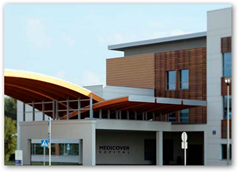It’s been kind of quiet on the medical tourism news but it’s not gone away. Poland now is aggressively offering surgical procedures here at half price. In the article below it states that bypass heart surgery will cost $15,000.00. That’s huge in dollars saved with a nine hour flight. Of course there’s a lot more that goes with it as far as taking a flight, etc. Poland is now trying to work with the UK to encourage more government participant and to recognize Poland as a full medical tourism destination. 
I just wrote about the Ascension Health Cayman Island hospital that just opened and so far Ascension is only an investment partner as I understand it but who’s if and when that could change. We all probably know that in the Caymans is where Aetna takes out their re-insurance polices and has for a few years and you can find a subsidiary of United Healthcare that has no listed executives named H & W Indemnity Limited in the Cayman Islands.
Health City Cayman Islands Opened This Year - A Partnership With Ascension Health In Medical Tourism
Back to Poland, they said the have state of the art facilities and realize they have to work around their “old world” perceptions at times. In Romania over 70k patients were treated and a lot of dental work there. People in Russia are flocking to South Korea to save money and don’t need a visa. Of course in the US many travel to Mexico for surgical procedures and dental care.
What adds to our costs in the US, Health IT and technology. When you look at the costs and I’m not saying go without it by any means, but it’s a lot and keeps growing. At some point decisions have to be made as to how much do you buy and where as software keeps building on itself too. We are a nation of “Stat Rats” and that’s exactly what got the VA in big trouble as people can’t tell the difference in what’s a real value and what’s virtual out there anymore too. BD
The facilities would make any NHS manager envious. The doctors are experts with world-class success rates. The prices are often half what you'd pay at home. Why, then, are more of us not travelling to Poland to have routine medical treatments carried out?
For several years expat Poles have been returning home to get expensive dental work, plastic surgery and procedures such as hip replacements done at 30% to 60% of the cost they would pay in their adopted country.
Now a Polish government-backed initiative is promoting medical tourism into the country, targeting non-Poles from across the world, particularly those in Scandinavia, Germany, eastern Europe – and the UK. Those behind the plan hope Poland's location at the heart of Europe – along with its plethora of low-cost flights, cheap accommodation, and attractive tourist cities such as Krakow – will be enough to tip the increasingly competitive battle for medical tourism in Poland's favour.
"We offer clients the complete package – we pick them up at the airport and they can stay in our apartments next to the clinic," he says. "They can visit the beautiful city of Krakow while getting their treatment done by staff, who are absolute experts in their field. The treatment plan is designed to fit entirely around the customer."
"We understand that people have outdated images of Polish medical facilities but we are here to say we now have world-class facilities," she says.
"It amazes me that people can be asked to pay $100,000 for heart bypass surgery in the US, but they can fly nine hours to us, they can have as good or better treatment, and pay just $15,000."
http://www.theguardian.com/business/2014/jun/01/poland-medical-tourism-half-price
More information about medical tourism in Poland you can find at: Medical Tourism website.
ReplyDeleteMacular degeneration treatments from Europe
ReplyDeleteStem Cells
In what coul be a milestone for treatment of dry AMD, Advanced Cell Technology (ACT) received approval in the U.S. and Europe in 2011 to begin clinical trials to investigate the safety and effectiveness of using retinal pigment epithelial (RPE) cells derived from human embryonic stem cells for the treatment of dry macular degeneration.
In January 2012, ACT announced the first patient in Europe received the treatment, and the following month the company announced three patient in the U.S. had been treated. Three trials will be conducted in the U.S. and Europe, with 12 patients enrolled in each trial. Preliminary results are expected in early 2013.
In February 2012, another company, StemCells Inc., announced it will begin FDA-approved phase 1/2 clinical trials to evaluate the safety and preliminary effectiveness of the company's purified human neural stem cell treatment for dry AMD.
The company plans to enroll 16 patients and the stem cells will be administered by a single injection into the space beneath the retina. Patients will be examined at predetermined intervals over 1 year and then will be followed for an additional 4 years in a separate observational study.
For more information please visit- www.voyagermed.com